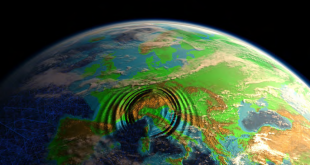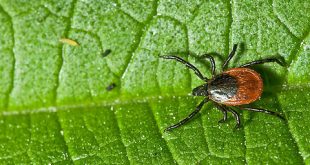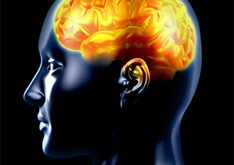The stork has always been a symbol of spring and new life. Waterfowl is protected by the Law on the Protection of Nature. Black and white harbinger of spring nests on roofs, chimneys, churches, towers.
The white stork is shirokokrila soaring birds relying on soaring between thermals of warm air at long flight distance. Since thermals only over land, storks, together with the large raptors, must cross the Mediterranean in the tightest points and hundreds of birds can be spotted passing through the straits of Gibraltar and Bosfora.
The white stork is a large bird, one meter high. 2 m. Wingspan. Weight 2.3 to 4.5 kg. It is entirely white except for the black feathers on the wings, and red beak and legs. Walks slowly and steadily on the ground. Like all storks fly with neck outstretched.
Propagated in open agricultural areas with access to marshy swamps. Builds a nest of sticks in trees, buildings, or special platforms. Since it is considered a bird of luck, not persecuted, and nests close to human settlements. In southern Europe, nests of storks can often be seen on churches and other buildings. They often form small colonies.
The disappearance in northern regions may be due to the drying of wetlands and collisions with power cords.
White Stork, and most of his relatives, eats mainly frogs and large insects but also young birds, lizards and rodents.
This stork is almost silent except for the noisy chatter beak when adults meet at the nest.
Black Stork is a hermit and nest on inaccessible cliffs or tall trees in old deciduous or mixed forests near rivers rich in frogs and fish. Foods with water snakes and other small animals.
Until recently it was believed that the storks no sounds except clatter with his beak, but it was found that they rarely use my voice.
According to mythology, ‘stork’ is responsible for bringing babies. This story probably occurred because White Storks have a habit of nesting on chimneys in urban areas and therefore are often seen around human settlements.
Returning from tropical Africa, storks look old nests or make new homes close to last year. Young birds do nest near the place where they were hatched. Experts have identified nests that have been used for hundreds of years. More than half of stork nests built on electricity poles, according to a study of the organization “Green Balkans” and short circuit can ignite. Another danger to birds is that their mansions used sisal or plastic from landfills and can get tangled. To stay storks many years in our villages, take a number of initiatives. One of them is counting nests as part of the international Census of white stork, which are held once every 10 years. The last census of 2004-2005, then reported 1,456 nests, of which 1298 breeding pairs. The aim is to monitor the number and preferences of birds, the threats they face in order to take adequate measures for their protection. The number of dalgoklyunite can judge the state of the environment and food availability.
Do we know all about storks?
Storks fly only during the day. To fly long distances, use the soaring flight and the warm ascending air currents called thermals or Thermitsa. These currents are invisible waves of warm air that rises from the ground as a result of its heating from the sun. Entering Terme, storks rise than pushing them up warm air. After reaching the highest point of Thermo, storks leave him wearing smoothly and long distances. Gradually losing altitude until reaching the next Thermal. In the fall can be seen in flocks of 10 000 migrating storks and sometimes more numerous. One of the busiest parts of eastern migratory highway (Via Pontica) is the region of Burgas. If you have good conditions for soaring, white storks can travel 500 km a day. The total distance traveled during migration from 2000 to
10,500 kilometers and passed approximately four weeks. In the autumn the young storks leave the nest to go on the road 1-2 weeks earlier than their parents. During spring migration back to Europe takes more time. Birds travel shorter distances per day, as the weather in spring is worse. Storks fly to places for nesting in the period from January to April. In Bulgaria arrive in early March.
Myths and stories about storks
According to legend, once the stork was a man. Many pious man and was a great devotee, every year he went to the Holy Land to worship. God, however, decided to test and verify whether it is really so great faith. She appeared before him and told him to climb a high mountain with a large box strapped to his back, but was forbidden to open the lid and look at what’s in the trunk. He sets out to climb the man, and at one point stopped to rest and his curiosity prevailed and opened the trunk. Inside naizlezli snakes, lizards, frogs and scattered in the wider world. Angered the Lord turned human stork and told him that he would become a man again, until he bring back into the chest all the creatures fled. Since then, the stork all summer walks along the rivers and swamps to hunt frogs, snakes and lizards, but autumn still went on pilgrimage to worship the Holy Sepulcher and to beg forgiveness for their sin.
Of the Annunciation in Central Bulgaria has a custom jingle with tongs and poker and to frighten snakes: Run, snakes and lizards that come storks! Popular belief affirms that the biggest and most venomous snakes can not harm the storks. It has happened – tell old people – serpent eagle to beat, but never overwhelmed stork. A house there stork nest on the roof or Swallow – under the eaves, this house is protected by misfortune and bad spells. Great sin is to break the nest to break the eggs or killing the pups. When people see the first storks, it is better to have money in their pockets or bread in their hands to rich City and throughout the year. They prefer to do rather than sitting to argue their work and meet them with the wish: You can sit, and I can fly! Even to dream Stork – is good.
 Happy at Home Family Problems & Solutions | Home & Health Tips
Happy at Home Family Problems & Solutions | Home & Health Tips








